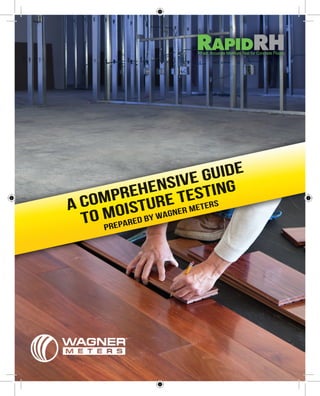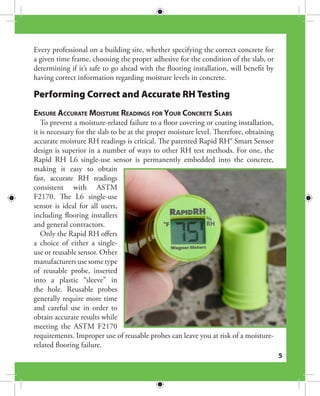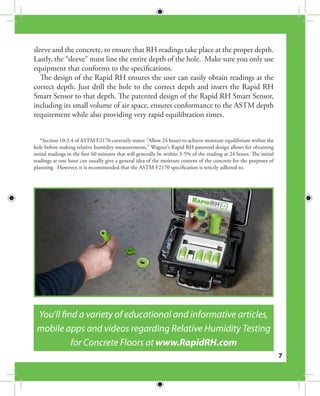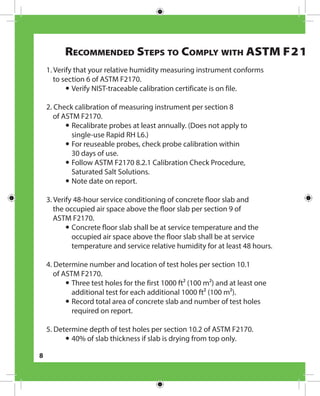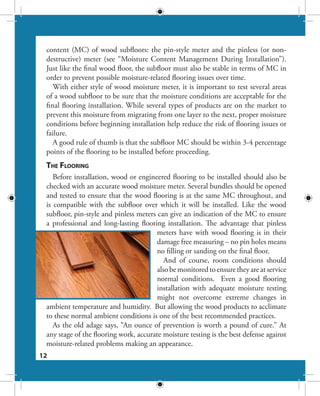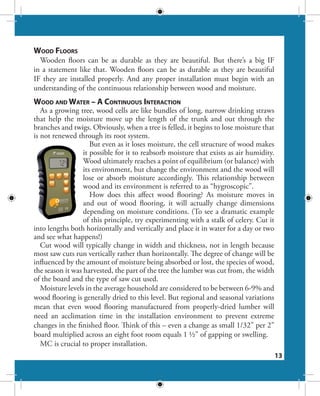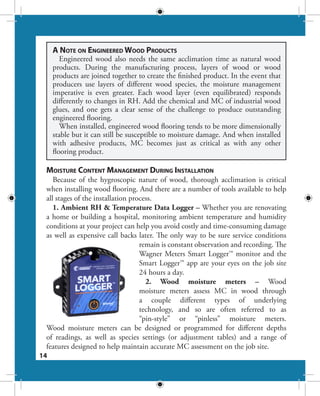Accurate moisture measurement of concrete slabs, wood subfloors, and wood floors is critical to prevent flooring failures. The document discusses the importance of testing moisture levels at various stages, from the concrete slab to the wood subfloor to the flooring materials themselves. It emphasizes using in situ probes to test concrete slab moisture according to ASTM F2170 standards. Proper moisture testing of all materials prior to installation can help reduce the risks of moisture-related problems and costly repairs.
